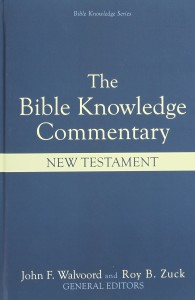The superior sacrifice
The superior sacrifice (9:16–28)
The author has made it clear that Christ’s death has instituted a better covenant (vv. 11–15) which is superior to animal offerings (vv. 12–14). But the need for such a sacrifice has yet to be explored. So a keyword in this subunit is “necessary” (anankē, vv. 16, 23). In the process of exploring this point, the author clearly underscored the measureless superiority of the sacrificial death of Christ.
9:16–17. In opening the new unit of thought, the writer employed a swift semantic shift in which he treated the Greek word for “covenant” (diathēkē) in the sense of a will. While “covenants” and “wills” are not in all respects identical, the author meant that in the last analysis the New Covenant is really a testamentary disposition. Like human wills, all the arrangements are secured by the testator and its beneficiaries need only accept its terms.
Treating the New Covenant in this way, the author argued that its force—like that of all human wills—depends on the death of the one who made it. That is when it takes effect.
9:18–21. The Old Covenant was also put into effect with blood. Drawing on material that may have partly been derived from traditions known to the writer but not specified in the Old Testament, he described the inauguration of the Old Covenant through ceremonies involving the sprinkling of sacrificial blood.
9:22. This verse applies to the Old-Covenant institutions, and the words nearly everything leave room for the flour offering which a poor Israelite might bring for his sin (Lev. 5:11–13). But the writer was thinking of the system as a whole and the ritual of the Day of Atonement that pertained to the totality of the nation’s sins, which showed that without the shedding of blood there is no forgiveness. These words also constitute a principle that is true in the New Covenant.
9:23. In connection with the New Covenant, the writer then enunciated his basic principle: the death of Christ was necessary. Mere copies (hypodeigmata; cf. 8:5; 9:24) of the heavenly things might be adequately hallowed by animal sacrifices, but the heavenly things themselves required more than that. The expression “heavenly things” referred quite generally to the new priestly arrangements, which have heaven as their focal point. These arrangements involve dealing with people’s sin and must thus be inaugurated with a sacrifice adequate to “do away” with that sin (cf. v. 26). The death of Christ meets this requirement.
9:24–26. Christ was appointed as High Priest of the New Covenant to represent sinful people in heaven itself, that is, in the presence of God. So His sacrifice had to be greater than that which allowed entrance into a mere man-made sanctuary that was only a copy (antitypa) of the true one. Nor could Christ offer repeated sacrifices as in the Levitical institution, for that would have required Him to die many times since the Creation of the world. Instead, as is obvious, the heavenly ministry of Christ called for a thoroughly sufficient, one-time sacrifice. This is precisely why He appeared once for all (hapax, cf. v. 28; also cf. ephapax in 7:27; 9:12; 10:10) at the end of the ages to do away with sin, which the priests in the old arrangement could not do. By the phrase “end of the ages” the writer evidently meant the climax of the Old Testament eras as well as the imminency of the climax of all things. He will shortly refer to Christ’s second advent.
9:27–28. With this observation, eschatological realities come into focus. Humans are sinful creatures destined to die once, and after that to face judgment. But this danger is turned aside by the fact that Christ was sacrificed once (hapax, cf. v. 26) to take away the sins of many people. The recurrence of “once” (9:26, 28) and of “once for all” (7:27; 9:12; 10:10) stresses the finality and the singleness of Christ’s sacrificial work in contrast with the repeated Levite ministrations. In addition, the “once”-sacrifice of Christ (vv. 26, 28) compares with the “once”-death of each person (v. 27). Now those who are waiting (apekdechomenois; used seven times in the NT of the return of Christ: Rom. 8:19, 23, 25; 1 Cor. 1:7; Gal. 5:5; Phil. 3:20; Heb. 9:28) for Him can look forward to His coming, not with a fearful expectation of judgment, but with the anticipation of salvation.
His first advent was to bear sins away—but His second will be not to bear sin (lit., “without [reference to] sins”).
Deftly the author implied that “those who are waiting for Him” constitute a smaller circle than those whom His death has benefited. They are, as all his previous exhortations reveal, the ones who “hold firmly till the end the confidence we had at first” (3:14). The “salvation” He will bring them at His second coming will be the “eternal inheritance” of which they are heirs (cf. 9:15; 1:14).[1] – Hodges
Professor Thomas A. Rohm
[1] Hodges, Z. C. (1985). Hebrews. In J. F. Walvoord & R. B. Zuck (Eds.), The Bible Knowledge Commentary: An Exposition of the Scriptures (Vol. 2, pp. 801–803). Wheaton, IL: Victor Books.



